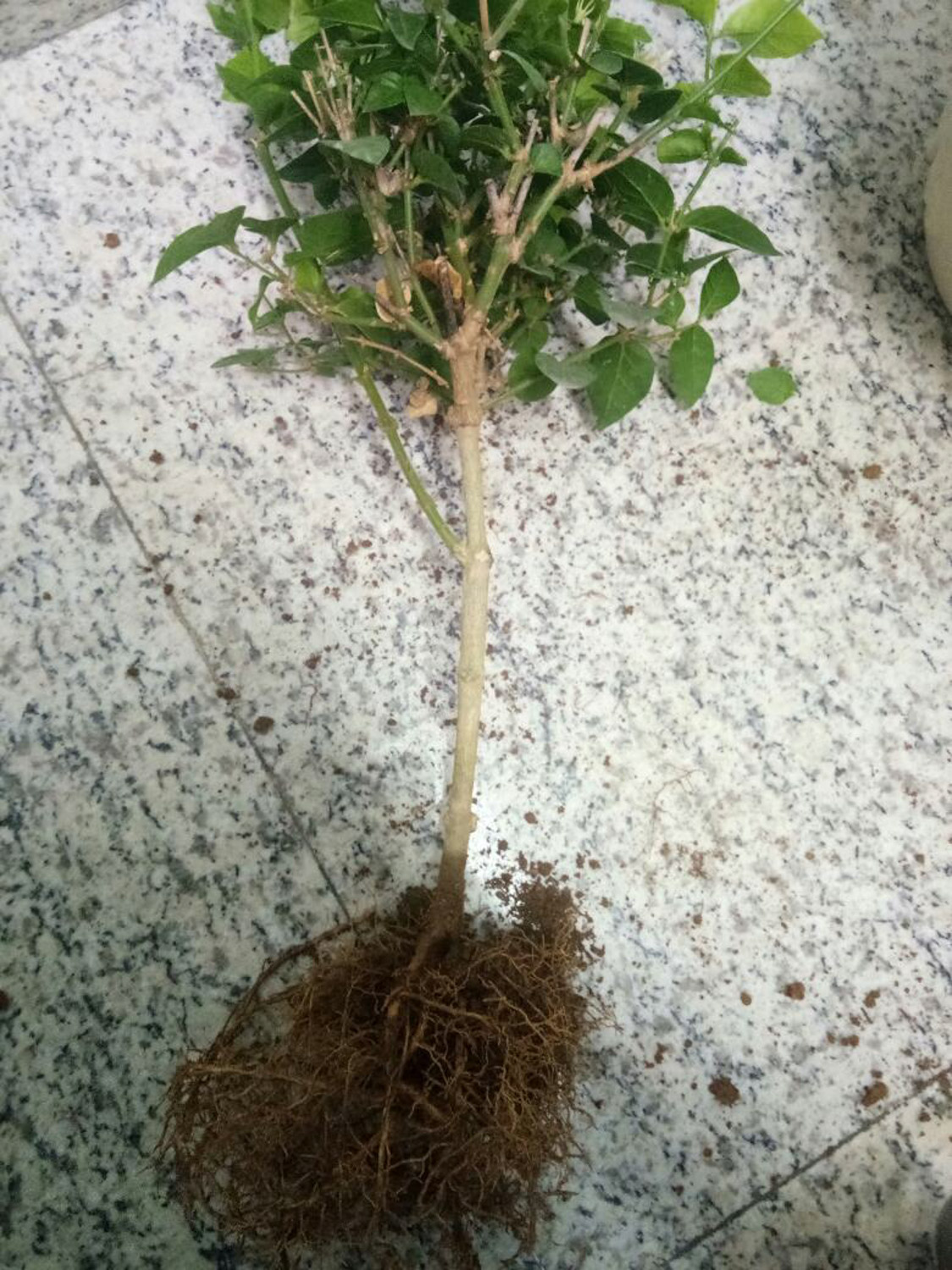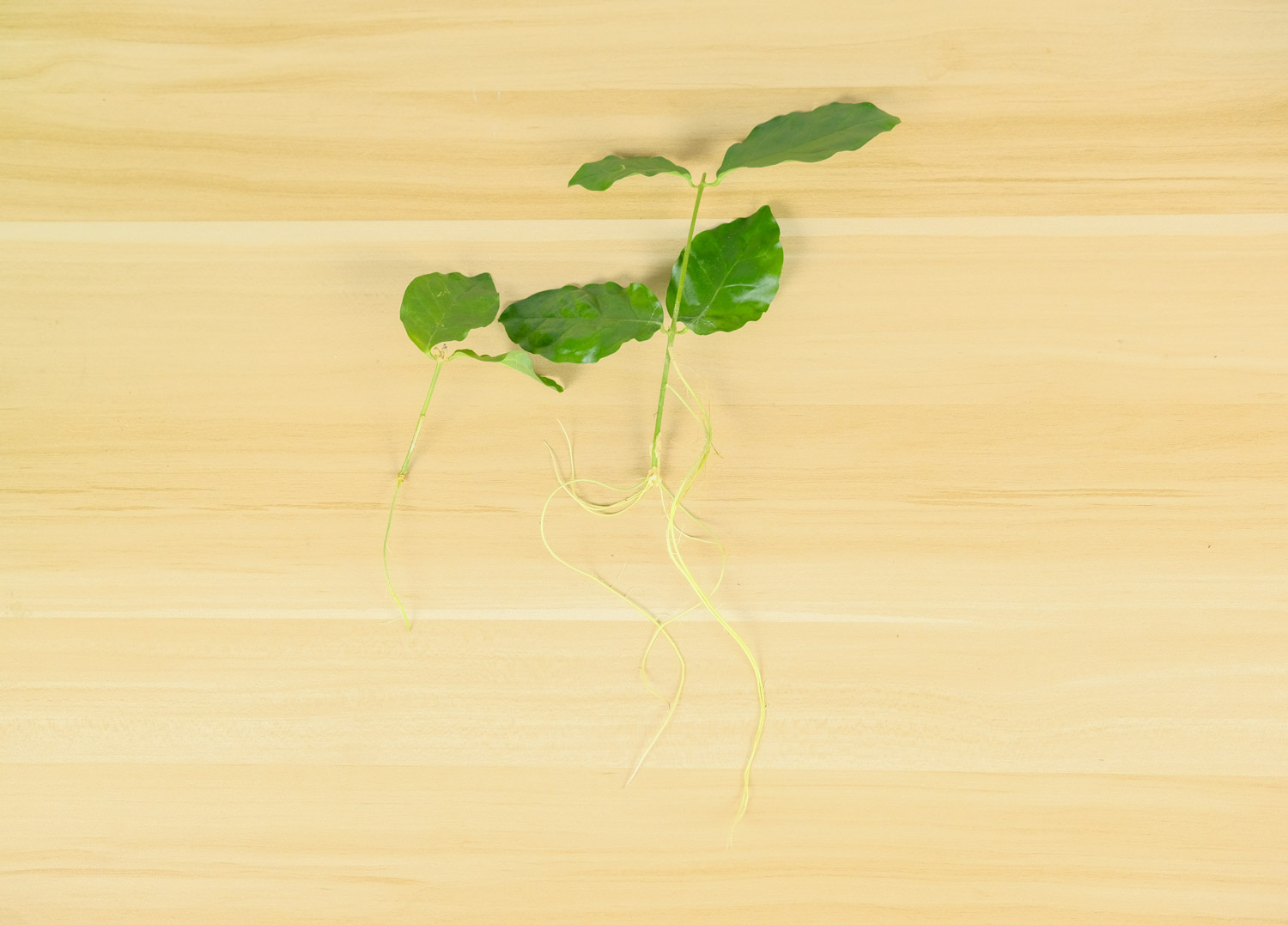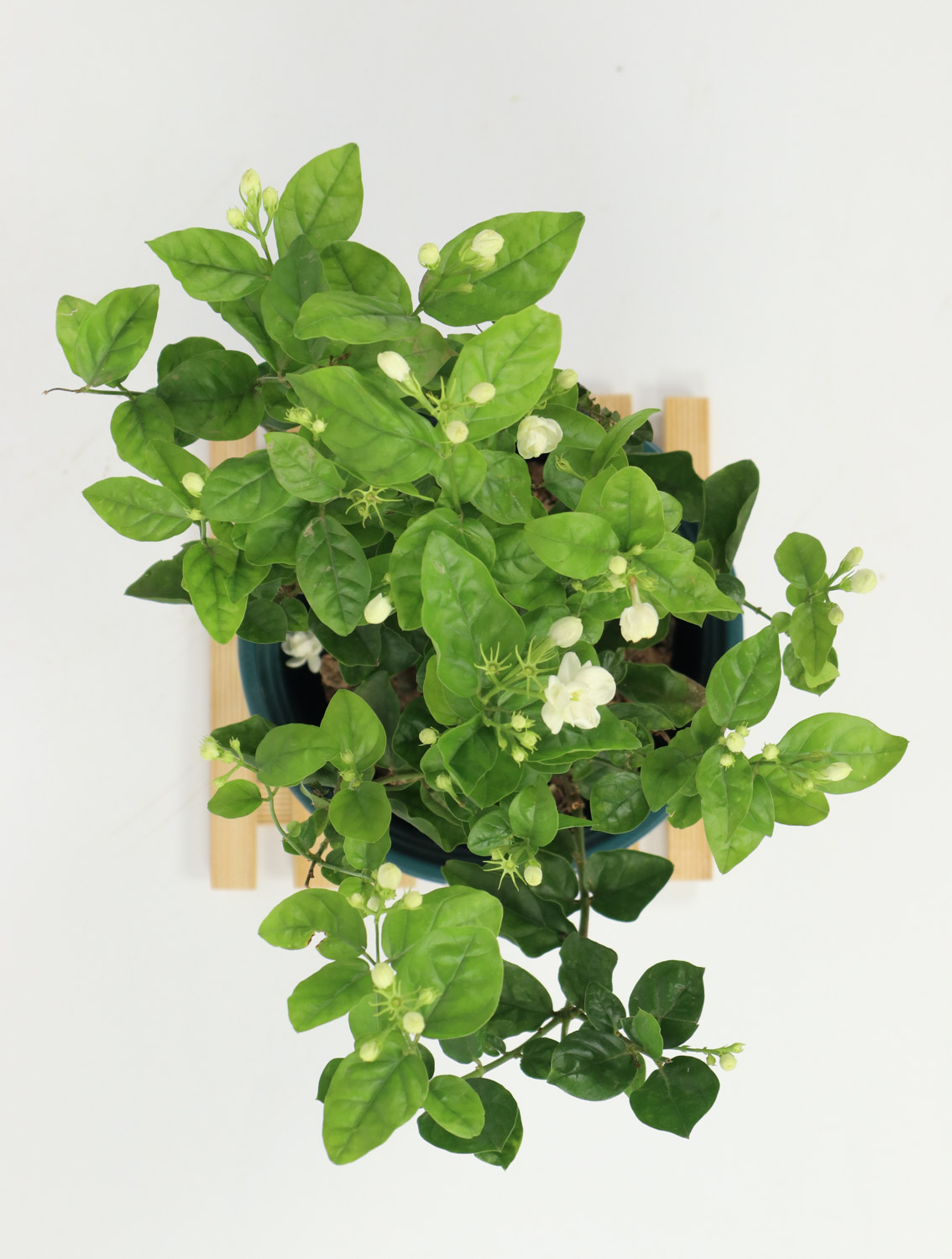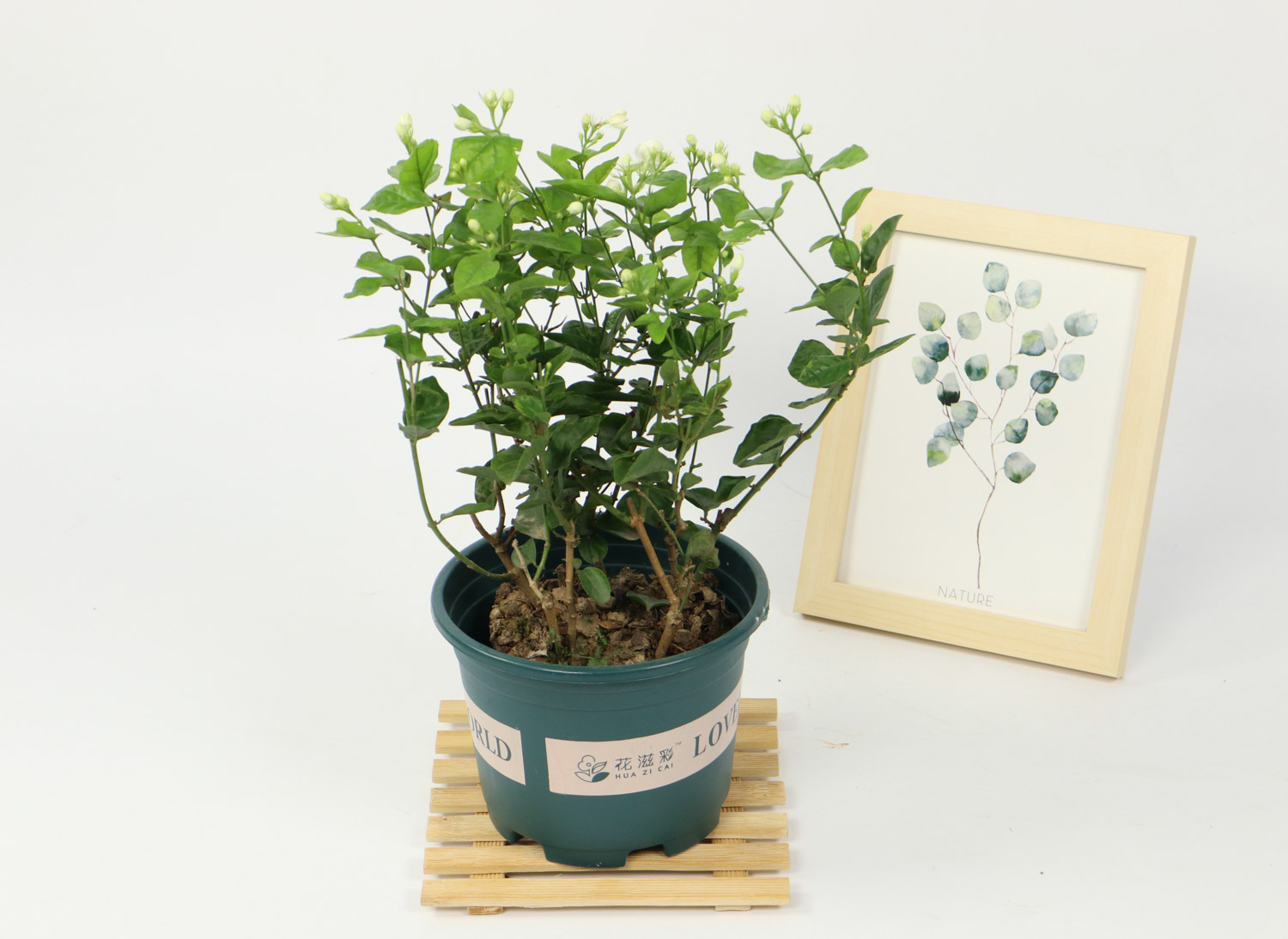How does Jasmine grow by layering

Jasmine is suitable for low-pressure propagation. Bend and press the branches directly into the soil and wait for rooting. The survival rate is almost 100%
Steps
1. Branch selection
Select a section of 1 ~ 2-year-old branches and cut the lower part to facilitate the interception of organic matter and promote the rooting of branches
2. Batten
Press the treated batten horizontally or bent into the soil where the mother plant is located, fix and bury it, and then put it in a cool and ventilated place for maintenance to keep the soil moist
3. Cut off transplanting
After rooting, the pressing strip can become mature within 1 ~ 2 months. At this time, cut the pressing strip and the mother plant, and then transplant it into a new pot for normal maintenance
Maintenance skills of jasmine flower in summer
1. Watering: water once every morning and evening to keep the basin soil moist without ponding. When the air is dry, often spray water around the potted plants to moisturize
2. Light: Jasmine likes light. In summer, when it is in full bloom, you should bask more in the sun, but don't expose to strong light
3. Fertilization: apply rotten cake fertilizer and water every week in summer, and apply thin fertilizer frequently
4. Pest control: in summer, jasmine is easy to be infected with red spider and leaf blight. Once it is found, cut off the diseased branches and leaves immediately, and spray 20% dicofol 1000 ~ 1500 times at the diseased place, so as to reduce the spread of pests and diseases for three consecutive times
How does Camellia grow by layering

Now Camellia has entered the dormancy period. From July to August, the old branches can be selected for layering propagation. Because the camellia branches are high above the ground and are not easy to bend, the high-altitude layering method is generally adopted
Steps
1. Branch selection
The pressing of camellia is generally 2-year-old healthy branches without diseases and pests
2. Girdling
At 0.5cm below the node pressing the branch, peel off the 1 ~ 2cm wide annular outer skin on the outer skin with a knife to expose the white wood. After air drying for 1 ~ 2 hours, wipe some rooting powder
3. Soil preparation
Red mud, perlite and vermiculite are mixed to prepare nutrient soil
4. Bagging
Choose a white transparent plastic bag, cut it up and down, disinfect it with bactericide, put it on the pressure strip, fasten the lower part with thin rope, then fill it with nutritious soil, spray water to wet it, and then fasten it
5. Post management
After the high-altitude strip pressing is completed, it shall be placed in the ventilation and astigmatism place for curing. Be sure to replenish water frequently and keep the substrate moist. You can take root in a month or two. After taking root for half a year, you can transplant
Maintenance skills of Camellia in summer
1. Watering: Camellia will be dormant in summer. It is necessary to properly control the water, keep the soil slightly dry, and spray more water on the plants
2. Light: when the temperature exceeds 30 ℃, it shall be shaded or placed in the indoor scattered light for maintenance, and pay attention to ventilation
3. Fertilization: camellia is fond of fertilizer. Diluted compound fertilizer is applied every 1 week during the growth period, and thin fertilizer is applied frequently. Stop fertilization after dormancy
4. Pest control: when the weather is muggy, camellia is easy to be infected with anthrax and scale insects. If diseases and pests are found, remove the diseased branches and leaves first, and spray 600 times diluted chlorothalonil water solution at the disease place once a week
How does Osmanthus fragrans grow by layering

The potted Osmanthus fragrans has thin branches and narrow operation space, which is not suitable for the pressing method of jasmine with mud as substrate. Huahua will teach you a special method of layering today: paper towel air layering
Steps
1. Preparation tools
Prepare paper towels, disposable syringes, cotton swabs, plastic wrap and old newspapers for standby
2. Girdling
Select 1 ~ 2-year-old branches with strong growth and no diseases and insect pests, and peel them 1 ~ 2cm wide. Then dip the cotton swab into the rooting agent and apply it on the ring peeling place
3. Wrapping strip
Fold a page of paper towel in half twice, wrap it at the peeling place, tie it firmly, and then wrap it with a layer of fresh-keeping film. The fresh-keeping film should wrap all the paper towels, tie it tightly on the top and loosen it slightly on the bottom, so as to facilitate air permeability, water permeability and root drilling out
After wrapping, inject water into it with a syringe, and be sure to keep the paper towel moist
4. Shading treatment
Wrap an old newspaper on the paper towel to block the light, and it will take root in a month
5. Ramet upper basin
One month after rooting, the branches were cut off, separated from the mother plant, and then transplanted into a new pot
Summer maintenance skills of Osmanthus fragrans
1. Watering: in summer, the temperature is high and the water evaporation is large. Water should be poured before 9 a.m. every day to keep the basin soil moist
2. Light: Osmanthus fragrans likes light. June to August is the flower bud differentiation period. Ensure 10 hours of sufficient light every day to promote bud pregnancy
3. Fertilization: apply rotten cake fertilizer water, fish scale water or chicken and duck manure every 10 days in summer to ensure more and fragrant flowers
4. Pruning: in order to increase ventilation and promote flowering, the overgrown branches and leaves, thin and weak branches and tangled branches should be cut off in time
How do roses grow by layering

July to August is the most suitable season for the layering and propagation of roses. It not only has a high survival rate, but also is easier to blossom
Steps
1. Branch selection
Select 1-year-old branches with strong growth and full bud points
2. Girdling
At 0.5cm below the node pressing the branch, peel off the 1 ~ 2cm wide annular outer skin on the outer skin with a knife, scrape off the cambium, air dry and wipe some rooting powder
3. Cup set
Select a clean disposable paper cup or plastic bucket, drill holes at the bottom, put it on the batten, and then fill and water it. One rose can make several strips at the same time
4. Ramet transplanting
Put the treated rose in a cool and ventilated place to keep the soil moist and take root in a month. If the rooting branches are cut off, they can be transplanted into a new pot
Maintenance skills of rose in summer
1. Watering: spray water to the plants in the morning and evening every day, pour water every 2-3 days or so, and spray water to the air around the potted plants and the ground every day to cool down
2. Light: roses like light. They should have more than half of the light duration every day. When entering the high-temperature semi dormant period, they must be shaded and not exposed to the sun
3. Fertilization: stop fertilization in high temperature season, otherwise it is easy to burn the root system
4. Ventilation: roses are most afraid of muggy, the pot soil is airtight, and it is easy to rot. during maintenance in summer, you can turn on a fan next to the flowerpot to increase ventilation
The molding is actually very simple
Flower friends, have you learned
Give it a try
10 pots in a month~

 how many times do yo...
how many times do yo... how many planted tre...
how many planted tre... how many pine trees ...
how many pine trees ... how many pecan trees...
how many pecan trees... how many plants comp...
how many plants comp... how many plants can ...
how many plants can ... how many plants and ...
how many plants and ... how many pepper plan...
how many pepper plan...


























